What the pulse tells us about endurance and emotion in archery. By Martin Dietrichs
At the Tokyo Olympics, for the first time in a major international competition in addition to the arrow results the pulse of the athletes was shown in the lower left corner of the TV picture at the time of shooting. Similar systems had been trialled on the World Archery stage as long ago as 2012, but now a non-intrusive technological solution had been found.
As a former trainer of the junior squad of the Northwest German Shooting Association (NWDSB), I had already taken the pulse of young male and female athletes for the first time in the summer of 2004. With the help of the training book Archery for Shooters, which I also wrote at that time, I gave them objective assessments with targeted training recommendations for their strength, endurance and mental training.
This year’s Olympic final, with the indication of heart rates in beats per minute on TV, prompted me as an author and trainer to publish my former pulse-performance analyses for the national squad, with explanatory diagrams and theoretical basics, here for the first time. A survey such as this can help us to draw conclusions about endurance performance and more.
The Olympic Final
During the women’s individual Olympic final, the commentator on ZDF rightly remarked that the psychological pressure led to an increased heart rate in both shooters. In the exciting final for gold – which took place over five sets with the score tied at 5:5 resulting in a shoot-off – the following scores and pulse values of the arrows shot (around the time of release/shoot-off) were summarised. This information is recorded in Table 1, from which I drew several conclusions.
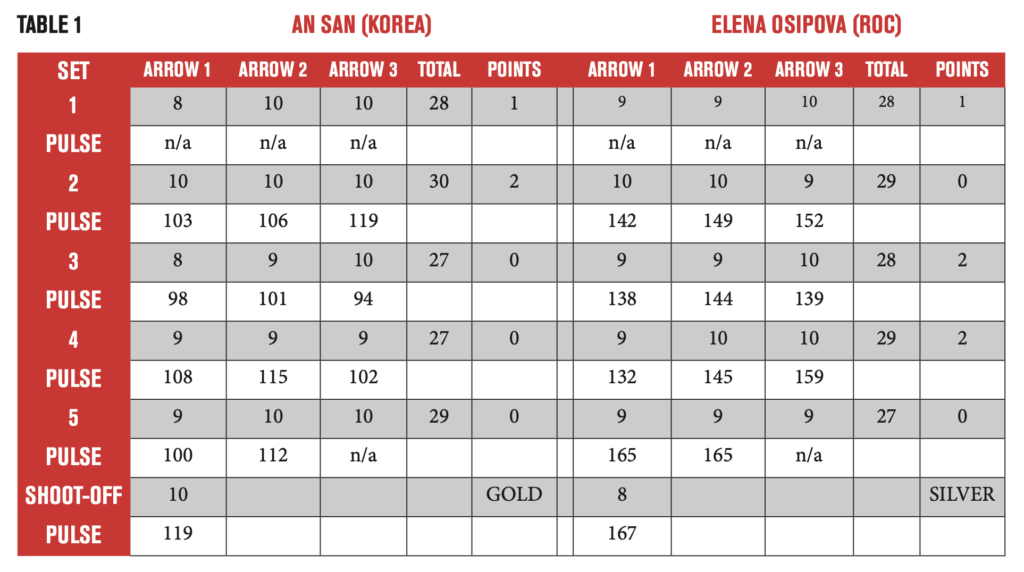
1. There is increased mental stress within an ‘important’ set with the pulse increasing from arrow to arrow: the mental stress phenomenon with pulse increase can be seen in both athletes when, for example, they try to complete a winning set or a set with 30 points; take a look at the heart-rate values in set two of both athletes.
This significant set pulse increase was even more obvious in set four of Elena Osipova’s contest with her heart rate increasing from 132 to 145 and then 159. However, she mastered the high aerobic/anaerobic rate and finished the set for herself with two 10s, making sure the final remained thrilling right until the end.
2. A near ‘maximum’ heart rate was recorded during the shoot-off. Both athletes shot the shoot-off with one of their highest pulse values in this final: An San with a rate of 119 and Elena Osipova with a higher rate of 167 beats per minute.
This leads to some interesting conclusions on endurance and metabolism. Although Osipova’s pulse rate was generally higher, and in some cases up to 70 beats higher than An San’s, she nevertheless shot astonishingly good sets, comparable to biathletes who have learned to shoot calmly and precisely (with a short pause for breath) under high intensive endurance stress and high heart rates.
All in all, Osipova’s heart rate increased from 132 in set four to 167 in the shoot-off, whereas An San’s heart rate remained quite constant throughout the final: around 110 +/-. Her lowest pulse of 94 in set three only increased to 119 in the shoot-off and thus remained within aerobic metabolism throughout the final. This is an advantage over the so-called anaerobic (low-oxygen) metabolism, which (apart from age), to put it simply, increases above about 150 beats per minute and makes the fast-release carbohydrates (sugar) available.
However, this is then associated with the increased metabolic waste products of the muscles, which are measurable as rising lactate levels in the blood, so that the body (and the mind) can tire more quickly and, most importantly, concentration can be reduced. (There has been an increasing emphasis on aerobic fitness in elite archery in recent years, partly for this reason.)
3. The effects of emotions and recovery on the pulse rate: An San, who seemed focused and competed in the final without much emotion, managed to put in a 30 in the second set and left the shooting line for the first time visibly pleased about it. In the following third set, however, she shot below her capabilities. Her pulse values in set three were the lowest in the entire final.
Apparently, after the joy of the three 10s, her body went into spontaneous relaxation/recovery mode, so that her pulse dropped. At the beginning of the third set with a heart rate under 100, her concentration/pulse and thus her body tension do not yet seem to be optimal again, and she shoots an eight with the first arrow. This is followed by a nine before she manages a 10 again with her third arrow. She is relaxed with the lowest pulse (94) recorded in the final. Something similar could be observed with Osipova who, however, seemed more excited and happy about her participation in the final.
Conclusion
The best elite archers have learnt to deal emotionally with the ‘excitement’ that a final brings, maintaining their concentration at the highest level and mastering the psycho-physical stress and relaxation that arise during the tournament, as the differences in pulse rates of about 30 to 70 beats per minute during the finals show.
Athletes at the highest level also need good basic endurance, both in terms of general fitness and in terms of sport-specific strength-endurance. This is a basic prerequisite for surviving tournaments and, above all, finals. After all, how is an athlete supposed to survive the upcoming tournament stress if there is a lack of basic endurance or even the necessary strength-endurance for a six-arrow series, for example? The pulse rate would rise so high and remain at a high level (that is, towards anaerobic, in excess of 160bpm) until body and mind are exhausted and the results on the board are generally weaker than one had hoped for.
Pulse values in archery in the aerobic metabolic range, generally up to a maximum of about 130bpm (age not taken into account), are to be preferred and should remain as constant as possible in a tournament. Higher pulse values, such as the aerobic-anaerobic threshold range of HF (high frequency) about 130 to 160, are not a criterion for exclusion, as the example of Osipova shows, and are acceptable under finals conditions. Above all, it is important to be trained to withstand psychologically induced stress peaks or, even better, to remain calm.
Finally, something that many archers have experienced should be discussed: the ‘Hurray, I have shot a 30’ factor. So many times, the disillusionment with (considerably) fewer points follows in the next end because of a lack of concentration due to the previous emotional joy, which without suitable mental techniques can have a longer effect than desired. The same applies to the negatives: anger over bad shots.
This generally leads to the sets being even worse afterwards. Eventually, the athlete will need to learn to deal skilfully with emerging emotions in the course of a tournament, so that one day the performance is accomplished optimally.
Heart-rate monitors
At Tokyo 2020, special cameras in the Yumenoshima Park arena allowed for biometric data to be measured remotely, without requiring the athletes to wear any monitoring devices. A pair of high-frame-rate cameras focused on detecting tiny changes in the shape and colour of an athlete’s face to determine how fast their heart was beating, with this data relayed to the TV production team.
The data appeared on screen in the live television feed but not in the arena, in case it distracted the athletes. The athletes also had to give permission to share the heart rate data; in the end, 60 of the 64 men and 62 of the 64 women agreed to share publicly.
The London 2012 Olympic Champion, veteran Korean archer Oh Jin Hyek, had one of the lowest heart rates of any archer to enter the arena in his first match in Tokyo, averaging in the mid-80s. But during his shoot-off arrow against India’s Atanu Das in the second round, which would ultimately eliminate Oh from the competition, it peaked at 143 beats per minute. The low heart rate of Kim Woojin in competition in Tokyo apparently led to a new nickname of ‘Sleepy’ in the Korean media.


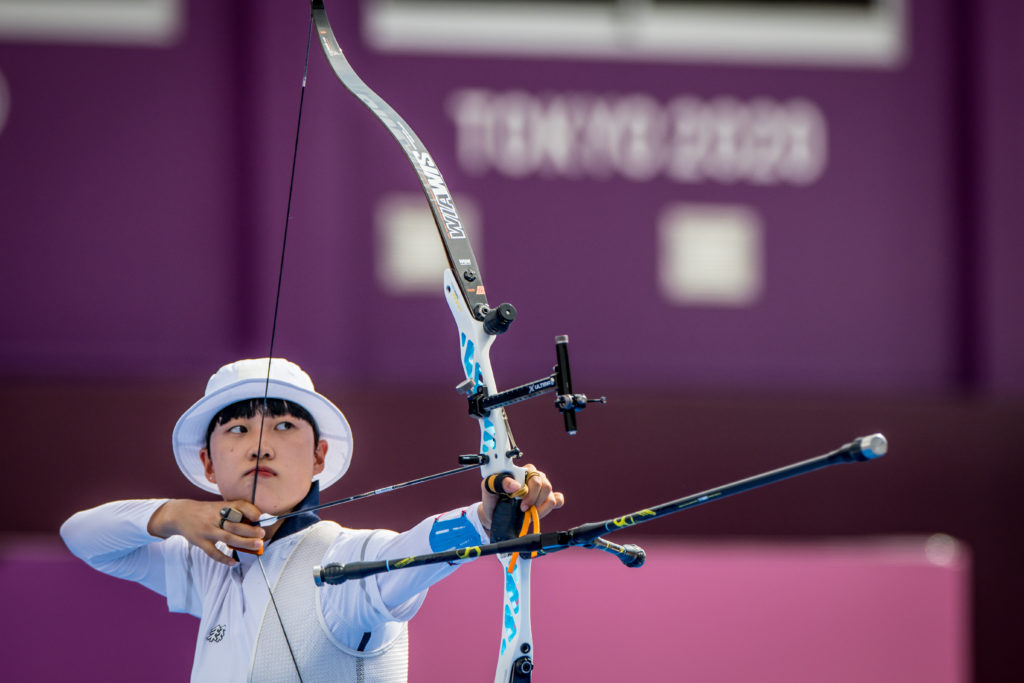
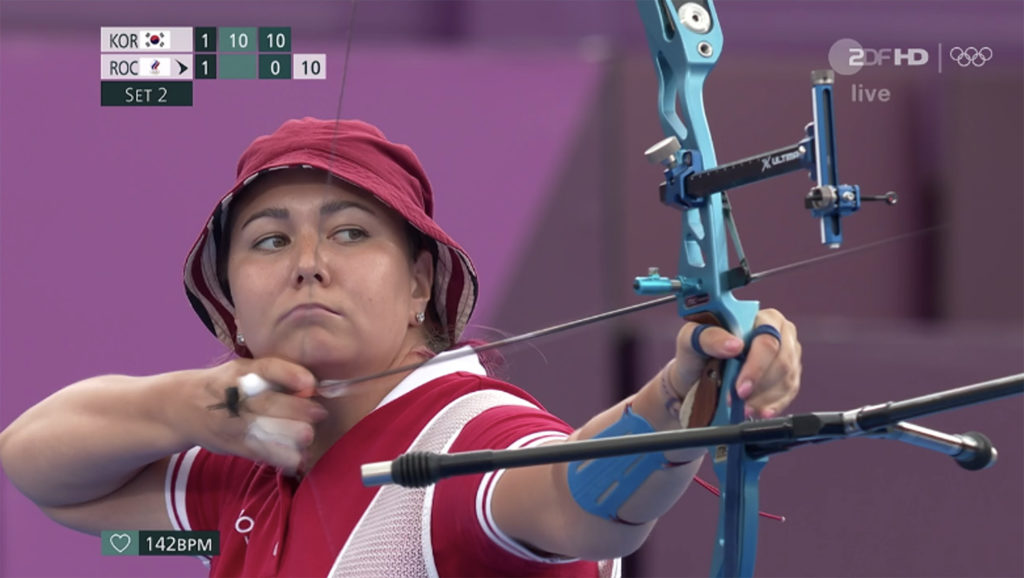
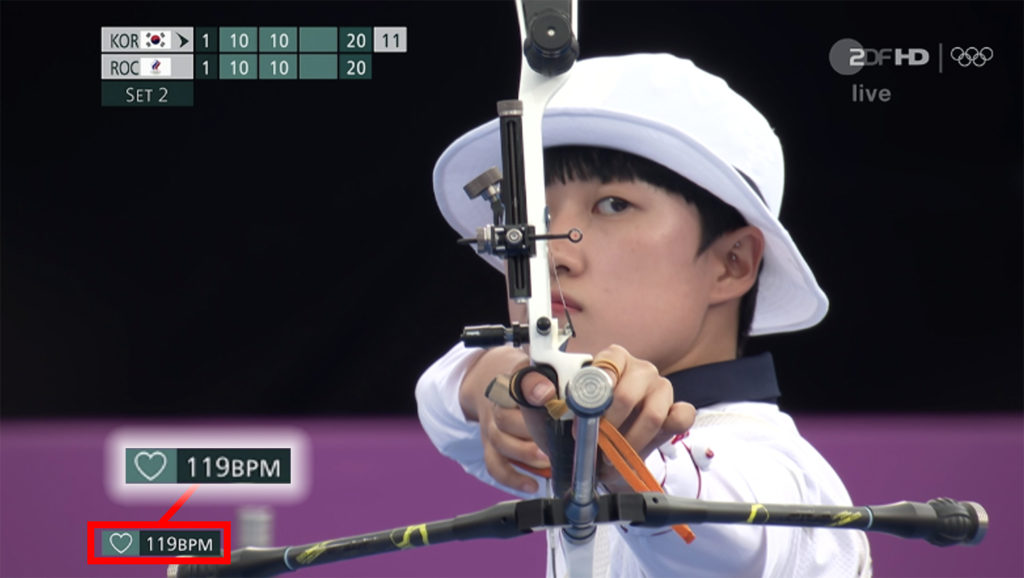
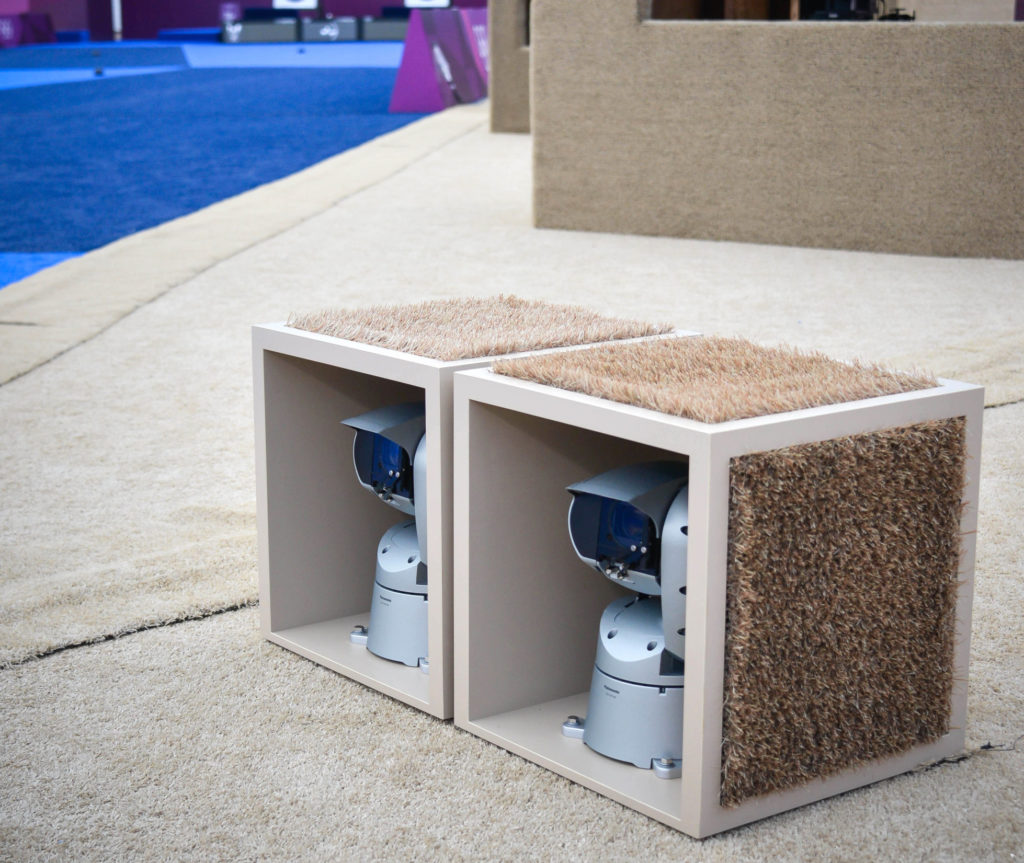
Eine sehr gute Arbeit,die die sehr deutlich belegt,daß Ausdauertraining den Stessfaktoren entgegen wirkt.